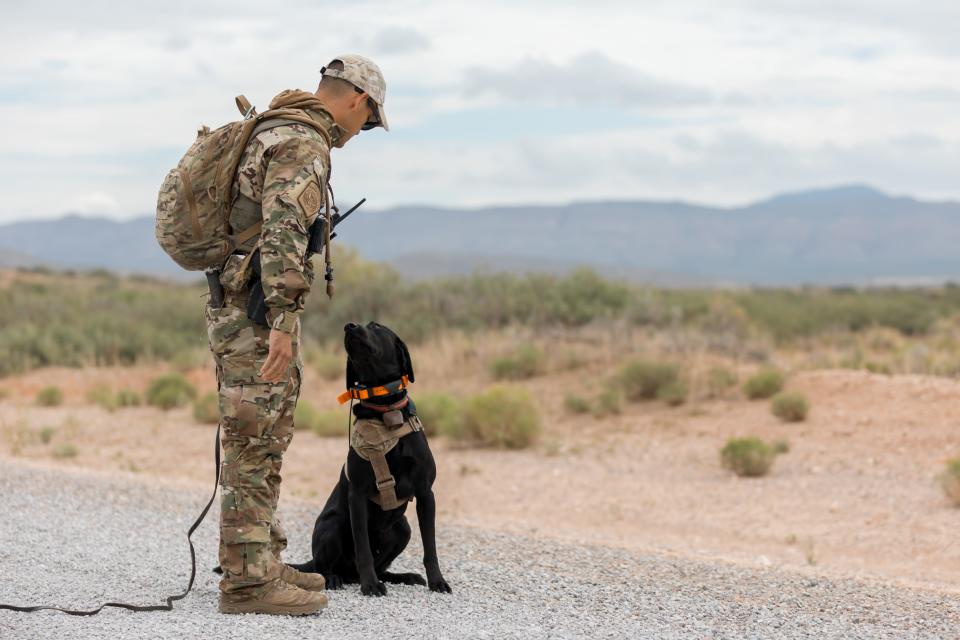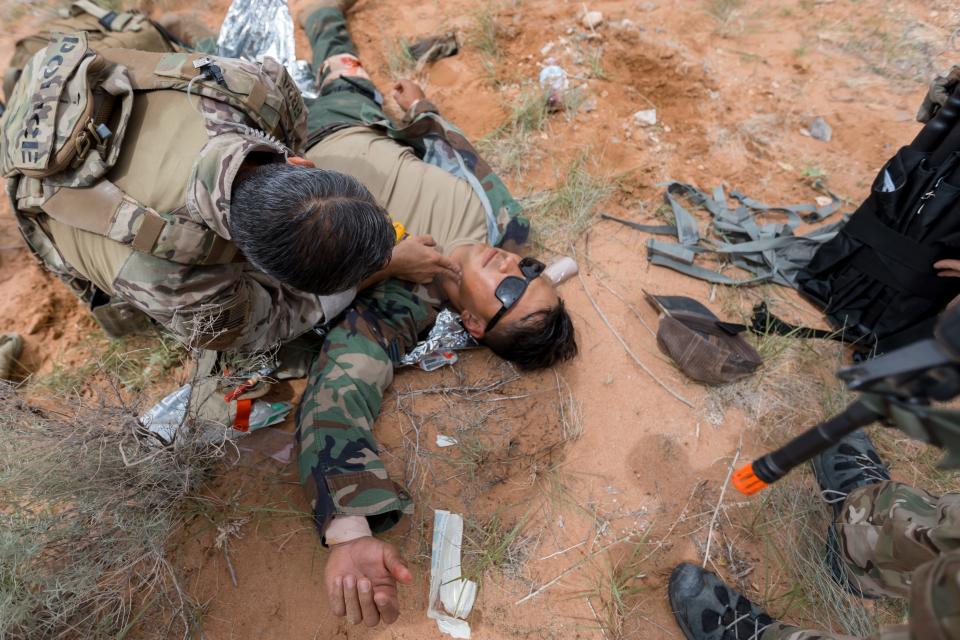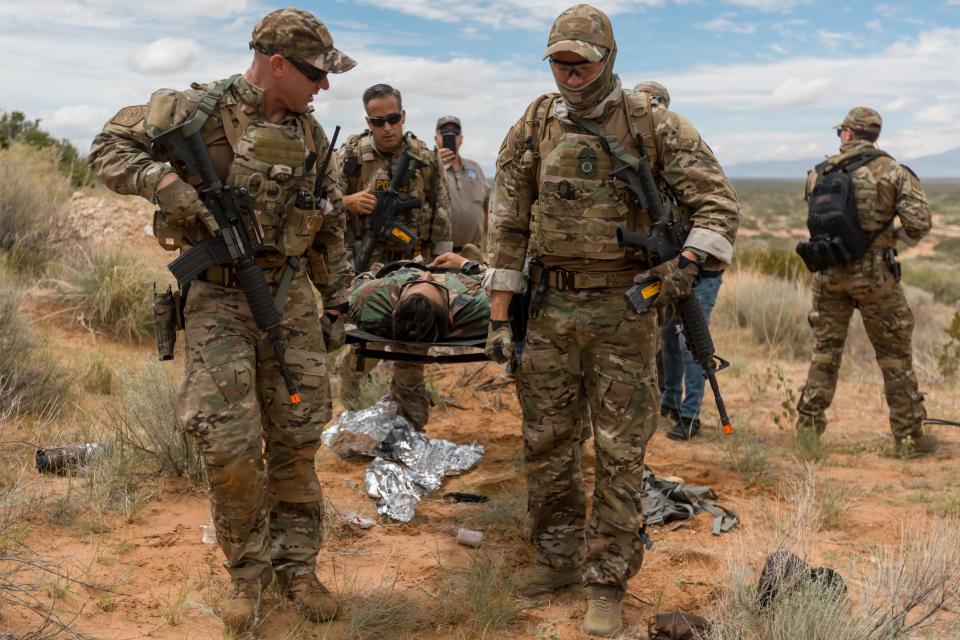Border Patrol 'search and rescue' agents train to save lives
FORT BLISS ARMY POST — A dozen U.S. Border Patrol agents trained in search and rescue ran into rolling hills of red sand carrying medical gear and blank-firing rifles.
The story went that a rancher had reported two migrants were stranded; one was shot and struggling to breathe. Blue, a black Labrador K-9, led the team through mesquite and creosote brush, tracking scent and sign to find the men.
The scenario was a controlled simulation of a deadly serious rescue: the final exam for an elite class of Border Patrol Search, Trauma and Rescue, better known as BORSTAR.
“With BORSTAR we’re trained differently compared with a medic in an urban environment,” said Philip Vanous, Border Patrol Special Operations supervisor during the August training event. “We train our folks in security and long-term field care, how we are going to treat a patient when we don’t have a hospital six to 10 minutes away.”

Border Patrol rescues, and migrant deaths, have risen sharply.
The border wall has pushed migrants into more dangerous terrain — treacherous mountains, scorching desert, areas where the Rio Grande is deep and fast-moving. The taller, 30-foot barrier erected during the Trump administration has also led to more severe injuries from falls.
With the pandemic-era Title 42 expulsion policy still in place, migrants are also making multiple attempts at crossing, inflating the overall number of encounters and leading to more rescues and more fatalities.
Border Patrol has reported nearly 19,000 rescues at the Southwest border this fiscal year to date, up from nearly 13,000 rescues in fiscal 2021 and roughly 5,000 rescues each in fiscal 2019 and 2020.
In the El Paso Sector that covers part of West Texas and all of New Mexico, Border Patrol has reported 63 migrant deaths this fiscal year, compared with 39 deaths in fiscal 2021, according to Border Patrol. Agents have made nearly 500 rescues this fiscal year.
More:'No one is going to forget': Juárez tries to recover from 'narcoterrorism' but violence takes toll
The training scenario unfolded on McGregor Range, a more than 600,000-acre military-controlled mesa between the Sacramento and San Andres mountains. The range holds the Fort Bliss Training Complex, where Border Patrol trains its specialized agents.
This year’s class of 44 was selected from 139 applicants.
The candidates go through a grueling 36-day selection course, then complete Emergency Medical Training, followed by a two-week tactical medic course, Vanous said. The 2022 graduates will join a roughly 300-person group of BORSTAR agents among 20,000 agents in Border Patrol.
Within minutes, Blue led the team a mile into the desert off a gravel road, to the stranded men.

A few agents worked to secure the area, while others began to attend to the fallen man — played by an agent who never broke character. A bullet had entered his left chest; there was an exit wound at his back. His knee was badly injured.
“Because our agents are called to operate all over the country, we want to be sure they get the most realistic training possible,” said Angel Vasquez, Border Patrol BORSTAR supervisory agent.
So That Others May Live! The #BORSTAR motto! #ElPaso & BORSTAR agents work together to save a family from drowning. With recent rainstorms in the region & currents of the Rio Grande River running rampant, El Paso Sector agents have been extremely busy saving lives. @cbp pic.twitter.com/srvb8CnBb6
— Gloria I. Chavez (@USBPChiefEPT) August 23, 2022
In the real world, it’s likely the agents would never have that much help again. BORSTAR teams are typically dispatched in groups of three or four or smaller. The rescue scenario was over in an hour; in the field, the wait for an airlift to a hospital could be much longer.
This time, their efforts were successful: The man playing the wounded migrant survived.
Not all the BORSTAR trainees could say the same: Of the 44 men who began the BORSTAR course in April, 13 graduated on Aug. 19. Those that didn't make it through could try again next year.

This article originally appeared on El Paso Times: Border Patrol BORSTAR agents train to save lives in dangerous terrain

